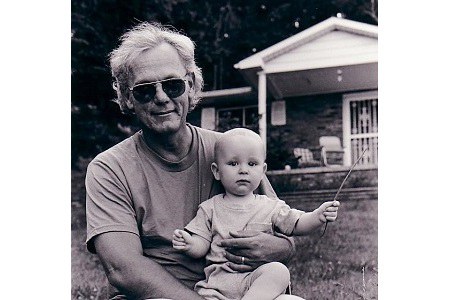 James E. Richardson Jr. On May 18, 1988, James Richardson Jr. was standing outside of his father’s house in Cross Lanes, West Virginia, when he noticed that a neighboring house was burning. He kicked in the door, rescued a 3 year old girl, and then called police. The girl’s mother, Kelli Gilfilin, was found inside bound, raped, and beaten to death. Richardson was a suspect because he was at the scene and he was arrested shortly thereafter.
Seven years later, Richardson’s case became one of many that were overturned after Fred Zain, formerly of the West Virginia State Police crime laboratory, was investigated for a string of criminal convictions in which his testimony or credentials were falsified. Ultimately, Richardson received $2 million from the state to settle his claims against the State Police and Kanawha County, where he was convicted of rape and murder.
At Richardson’s trial, Zain testified falsely that serological (“blood group”) testing on semen from the crime scene linked Richardson to the crime and excluded three other suspects. The jury convicted Richardson on July 27, 1989 and he was sentenced to life imprisonment without parole based, in large part, on Zain’s testimony.
Richardson's conviction was re-examined when Zain's work in several other cases was shown to be false or misleading, casting doubt on the entire body of his work as a forensic analyst and expert witness for the prosecution. In this case, it turned out that Zain had not taken into account the victim’s blood group markers. This made his results meaningless: because the victim’s blood group markers could have masked those of the perpetrator no potential perpetrator could be excluded through serology.
The West Virginia Supreme Court of Appeals appointed retired circuit court judge James Holliday to make recommendations on cases where Zain had testified. As part of that examination, the American Society of Crime Laboratory Directors Laboratory Accreditation Board performed an audit of Zain's work.
In Richardson's case, the board said: "There was no evidence that Lewis testing was performed on the swab, but the report implies that it was. The conclusion did not include any frequency, but a transcript was reviewed to see how these results were explained in court by Mr. Zain. He incorrectly multiplied the nonsecretor frequency . . . by 50% since the stain included semen (from males only) and finally by the PGM 1+ frequency, even though there may have been masking by the victim's PGM type. That the semen could not have originated from a secretor based on the absence of any blood group factors is not a certainty as stated in his testimony. . . . The value of the serological testing was overstated in both the report and the testimony."
Based on Holliday's recommendations, the Court of Appeals ruled on November 10, 1993 that defendants whose convictions were based in part on Zain's testimony could file petitions for new trials.
In Richardson's motion, his attorneys said that his innocence was based on more than just Zain's discredited testimony. A
reinvestigation uncovered additional problems. Police had withheld a flashlight that was found at the scene of the crime, and that was covered with blood. DNA testing indicated that blood on the flashlight did not come either from Richardson or from the victim. In addition, previously undisclosed statements to police by the victim’s 3-year old daughter suggested that she had seen some of the crime and that Richardson was not the attacker.
Richardson's conviction was vacated in September 1996, and he was released to home confinement. His charges were dismissed on July 15, 1999.
Richardson later received $1 million from the state and $1 million from Kanawha County. He died of a heart attack in 2011.
- Michael S. Perry
|